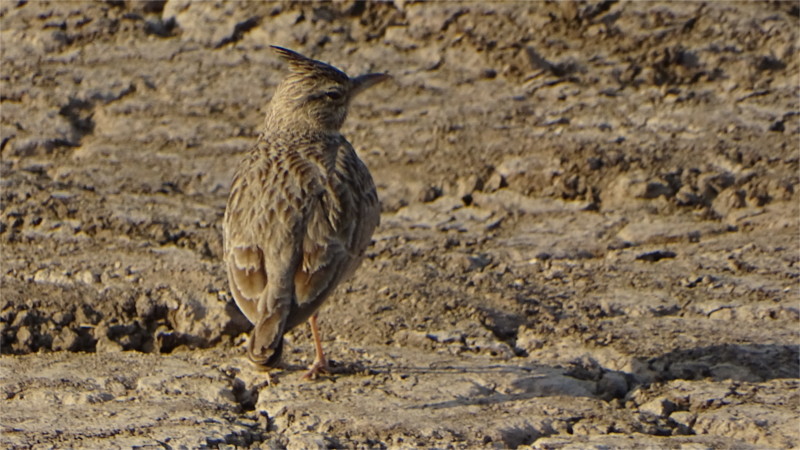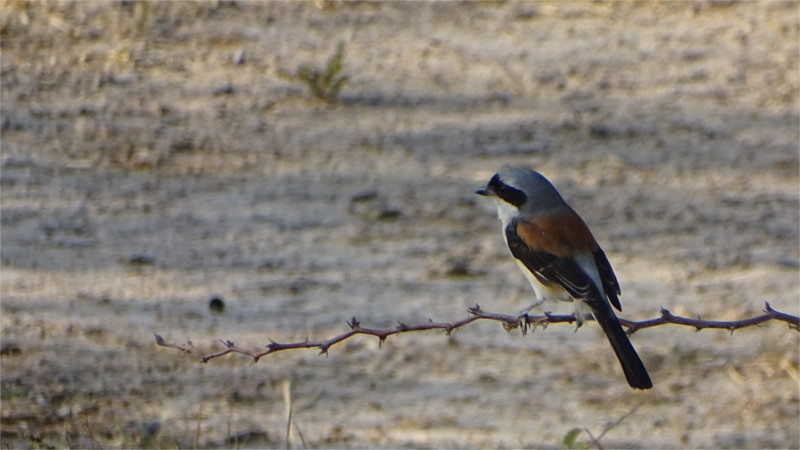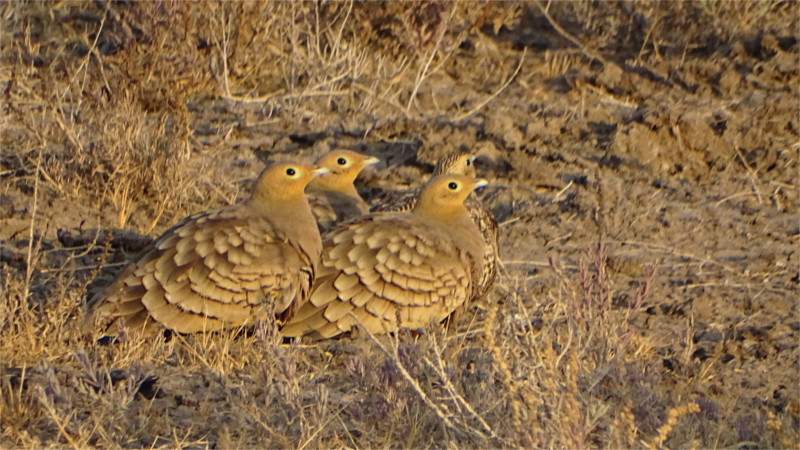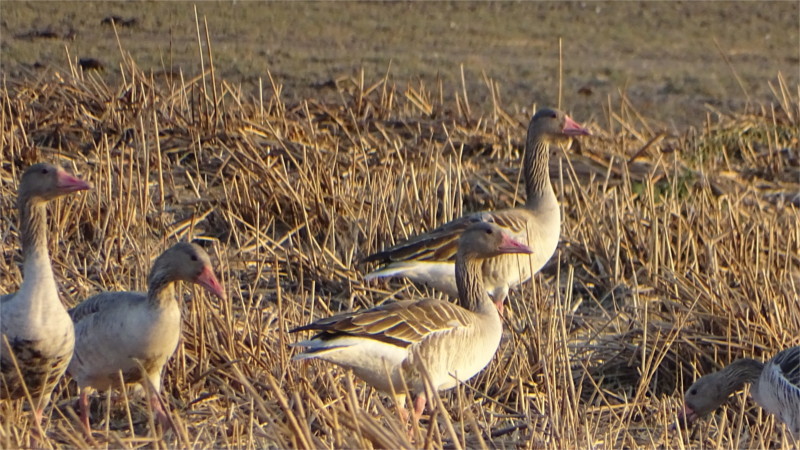When I saw the pair of ashy crowned sparrow larks (Eremopterix griseus) and took the photo that is featured, it was the end of a morning’s hunt. As soon as we arrived in this place. Adesh had identified a female by its call. I was excited, because I’d only seen the male of the species before. Even now I kept seeing glimpses of the male. Adesh was certain that the female had not left. Eventually, waiting paid off, and the female appeared in plain sight to sit with the male. I was struck by the differences in colouring and behaviour. Often, such differences point to different roles in the rearing of the young.
Apparently not in this case. From what I read, both sexes play equal roles in building nests, incubating the eggs and feeding the young. The difference between the birds is a result of what Darwin recognized as sexual selection, the process of choosing mates leads to escalating behavioural and morphological differences between the sexes: the overt masculinization of the male and the overt femininization of the female, without other important biological differences. The different appearance of the male must be part of this process (although I am going out on a limb, guessing here, because no one has tested this idea out). The most visible difference in behaviour is the courting ritual of the male: the high flights, the trills let loose at the apex of the dive. So wonderful that Shelley wrote a long ode (Hail, to thee … that from Heaven, or near it, pourest thy full heart in profuse strains of unpremeditated art, and so on) to the lark. But when behaviour is different, and biology is almost the same, that’s when gender politics rears its head. Apparently the female works harder at feeding the young!








